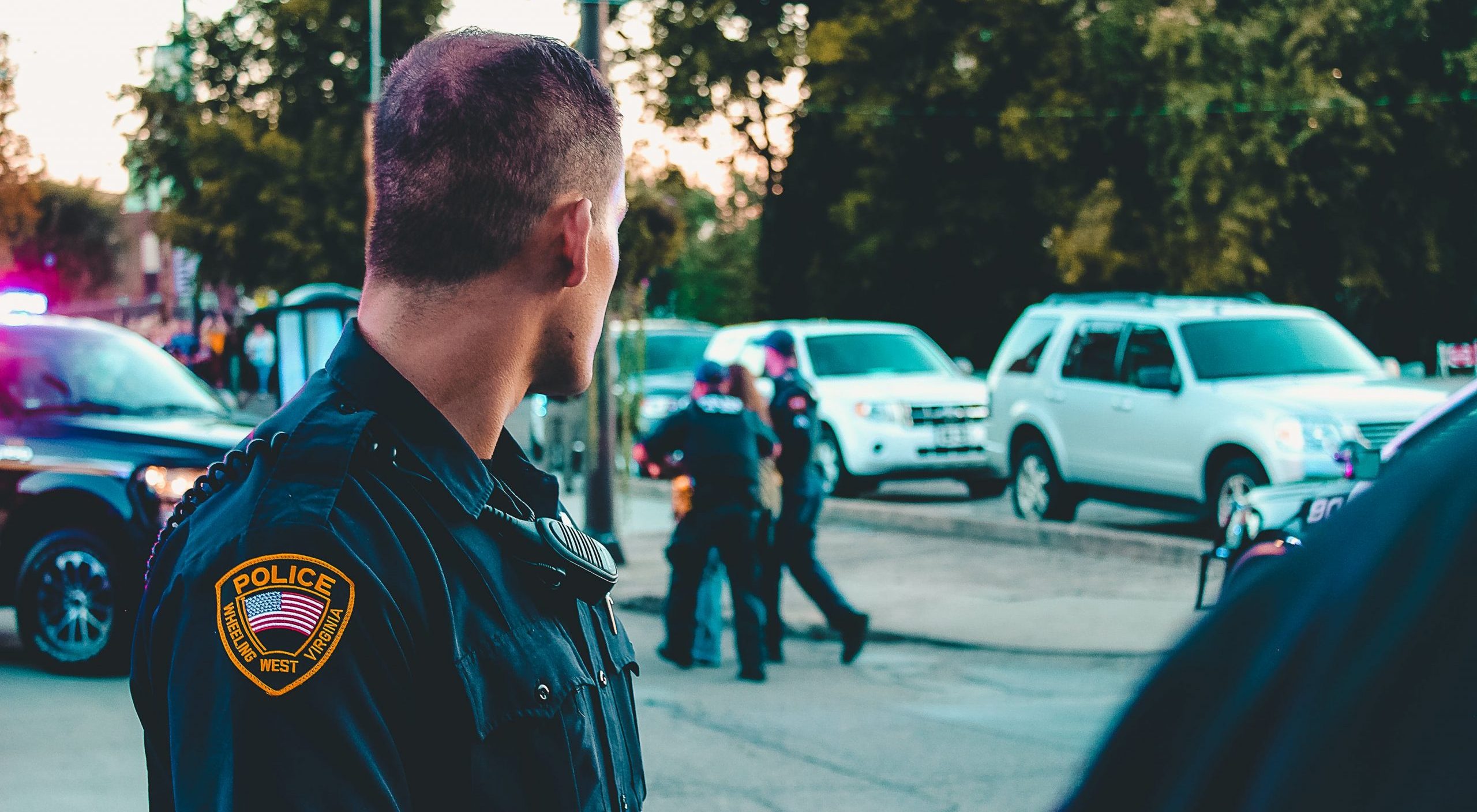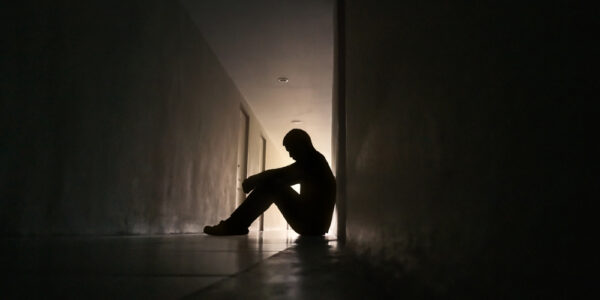LISTEN TO THIS ARTICLE:
This July adds two more names to the list of District of Columbia police officers who died by suicide following the events of January 6th. Officer Gunther Hashida was found dead at this home on July 29th. Just after his death became public, the D.C. Metropolitan Police Department revealed that another officer, Kyle DeFreytag, had also died by suicide earlier that month on July 10th. They join two other officers, Jeffrey Smith and Howard Liebengood, who took their own lives earlier this year after protecting the U.S. Capital during the January 6th insurrection.
While these deaths are salient because of their connection to the events in January, many more police suffer mental illness every day and receive no such attention. The job is intensely stressful. Police bear witness to the underbelly of society on a daily basis. They constantly confront violence, crime, and high-pressure situations for their entire careers. This stress and the mental toll it takes make it much harder to do the job well. While there are myriad factors at play in police conduct, one of the most understated is the mental health of the police themselves.
Way too common
Mental illness is strikingly common among police: At least a quarter of surveyed officers report current symptoms at any given time. Only a fraction of those – 17% – search out mental healthcare each year. Due to the taboo around mental illness in police, consistent numbers about specific mental illnesses are hard to find, but it’s clear that Post Traumatic Stress Disorder and depression are the most common.
Different studies have found that between 19% and 35% of officers show symptoms of PTSD. That’s five to ten times as common as in the general population. Depression shows up almost as frequently, appearing in up to 31% of police – or roughly five times the average rate. Anxiety, nervousness, and excessive worrying are also common.
Traditional signs of PTSD
People with PTSD experience four general types of symptoms: avoidance behaviors, mood changes, intrusive thoughts, and physiological reactions. “Avoidance” behaviors are so called because these people spend a great deal of energy trying to escape memories and reminders of traumatic events.
Mood changes are similar to depression, including hopelessness, negative thoughts about oneself, and lack of interest in previously enjoyed activities. Additionally, people feel numb, withdrawn from others, and may block out memories of the trauma.
Intrusive memories of the trauma (also called “flashbacks”) are a classic symptom of PTSD. Unexpected reminders can overwhelm people and make them feel like they are re-experiencing the trauma. These also strike when people are sleeping in the form of terrible nightmares. As a result, people with PTSD are very frequently tense and guarded. They have trouble sleeping and focusing on tasks and are easily frightened by reminders of trauma. They are prone to irritability, aggression, and violence against others and themselves.
Cumulative PTSD
The traditional thinking about PTSD assumes that the symptoms originate from a single, overwhelming and emotionally scarring event. Most police officers report experiencing at least one instance like this during their careers. They are likely to witness or be a victim of a car accident, a shooting, or terrorist attack. However, they also deal with a more insidious kind of distress called “cumulative PTSD.”
Cumulative PTSD builds slowly over time from daily stresses
Cumulative PTSD is insidious, an accumulation of tension from the everyday work environment. This includes conflicts with superiors and coworkers, communication issues, and harassment and discrimination in the workplace. Excessive workload, shift work, and lack of control over work-life balance play big roles as well. That all piles on top of the constant tension of interacting with the criminal suspects, victims, and other members of the public when on duty.
Taken individually, the sources of cumulative PTSD may not seem too severe – but that’s what makes it even more dangerous. With traditional PTSD, people are more likely to seek support and counseling following a major trauma. However, the daily strains that come with the job don’t draw the same level of attention or concern, so pressure builds day after day with no release.
Depression and anxiety
Although PTSD is the primary affliction police face, depression and anxiety appear alongside it quite often, usually from the same types of stressors. Depressed officers will withdraw from socialization, have trouble at work, and appear unmotivated. They may become irritable and angry as well. Self-destructive behaviors are common, such as excessive drinking and disregard for the safety of themselves and those around them. To top it all off, anxiety, nervousness, and excessive worrying are common among officers too.
Culture of silence
Even though many officers experience symptoms of mental illness, only a fraction actually see a professional and receive a diagnosis. This discrepancy implies that there are huge numbers of officers going untreated and suffering in silence. Many police officers don’t even know that they are experiencing the effects of mental illness. They often think it’s just part of the job, that they need to ‘deal with it.’
If I had a problem, I didn’t go to my fellow officers because of the shame.
This isn’t by accident, though. Confidential surveys of police reveal that there is a pervasive culture of silence around these issues among police. “If I had a problem, I didn’t go to my fellow officers because of the shame… I found help outside the department,” one former officer, P.A., reported. “There wasn’t much recognition of problem drinking or mental illness in general.”
Fear of speaking out
A strong majority fear that speaking out would negatively affect their careers. They know that their superiors would pass them over for promotions and give them less desirable assignments. Many believe most of their peers wouldn’t seek help for mental illnesses and that those who do will be viewed as weak and undependable. It sure doesn’t sound like a welcoming environment.
It’s no wonder officers are not comfortable opening up about their own struggles with mental illness. They fear that asking for help would be seen as an open signal that they are not up to the job. This suppressive culture discourages getting mental healthcare and leads to suicides, domestic violence, and poor decisions under pressure. Needless to say, it needs to change.
More dangerous than the job
Suicide takes more police lives than the job itself. One in every four police officers seriously contemplates suicide at some point in their careers, and every year between 130 and 150 make the terrible choice to end their own lives. Despite a suicide rate 60% higher than that of the general population, only about one out of every twenty police departments in the U.S. has a suicide prevention program.
We were supermen, we had to be supermen, we had the persona of being supermen, and anything that tarnished that wasn’t for the general public’s knowledge.
While those who die in the line of duty are remembered as heroes, the stories of those who take their own lives are sadly silenced. An aura of shame and dishonor surrounds the memories of these officers. “We were supermen, we had to be supermen, we had the persona of being supermen, and anything that tarnished that wasn’t for the general public’s knowledge. If anyone had issues, they did not become public,” former officer P.A. said. It’s a sad irony that the same lethal silence that enabled these suicides follows in their wake, as if nothing has been learned.
Self-destructive tendencies
Lacking a healthy outlet for stress, a disproportionate number of police turn to substances (most prominently, alcohol) to manage their emotions. As P.A. remarked, “You sought relief in other places.” This is common thread in people with trauma. In fact, over 40% of people with PTSD also have Alcohol Use Disorder. Faced with daily stress and a lack of training in coping mechanisms, police turn to self-medication. As a result, Alcohol Use Disorder is two to three times more common in police than in the general public.
You sought relief in other places.
There’s a peer-pressure component as well. Police frequently see drinking together in their off-duty hours as a primary form of socialization. Those who don’t partake fear that the rest will see them as aloof and untrustworthy. This environment makes it hard to come clean about problem drinking. It’s another example of how group taboos in police departments prevent officers from opening up about what’s bothering them.
Trauma in, trauma out
Some of you reading this right now might have difficulty sympathizing with the plight of police. “What about the hundreds of civilian lives taken by police every year? Why isn’t this article about them?” Actually, it is.
Trauma fundamentally alters how the brain processes threats, a skill set that represents a central piece of policing. PTSD impairs focus when making decisions in high pressure, high stress situations. It hinders officers from accurately assessing the details of a moment and makes them more likely to expect danger.
Anxiety leads to violence
The hyper-vigilant, anxious baseline of PTSD prevents officers from doing their jobs the best they could. One study even found that this kind of anxiety makes officers react faster to potential danger, using lethal force earlier. They give civilians less time to react, less time to convey that they are not actually a threat. Even worse, shooting accuracy declines with increased anxiety. It turns more situations into “shoot first and ask questions later” interactions with worse communication and more unnecessary and excessive force.
Think about this next time you hear about an officer using excessive force or perceiving a threat where there isn’t one. How could an officer with years of experience make such a poor decision? It is likely those precise experiences – those unresolved traumas – made it possible.
Spousal abuse
Police take these tendencies home with them, too. Domestic violence by police officers appears to be two to four times more common than in the general public. Officer-involved domestic violence is especially dangerous because of their training in physical combat and easy access to weapons. Abuse complaints against police are hardly ever pursued or punished. One study found that out of 227 reports of violence, only four led to convictions, and only one officer was punished by their department. In fact, police accused of theft or drug use were many times more likely to face repercussions than those who committed abuse.
Many victims of their abuse don’t report it. They fear more abuse as retaliation for reporting the violence, but they also know that it will continue even if they do nothing. As police, the abusers can get access to 911 call records so they can discover exactly what the victims stated, giving them even more control over the situation. When victims do come forward, their statements likely won’t be taken seriously or will be brushed aside by the officer’s department. This is yet another example of police protecting their peers at the cost of what is right and just.
Promoting connections
Changing how police communicate with each other is a crucial key to correcting this situation. One of the first steps in this process is to connect police officers in need with those around them who understand their situations. Peer support programs are one of the best ways to achieve this. The New York City Police Department has been operating a confidential peer support program (Police Organization Providing Peer Assistance) for over 25 years that could serve as a model for other precincts around the country.
The program offers a 24-hour hotline staffed by fellow officers who can refer callers to a therapist who specializes in working with police. These volunteers can also meet face-to-face with officers. They discuss stressors, stigma, and the benefits of asking for help. This program has helped thousands of NYPD officers, and developing others like it could help thousands more around our country.
Emotional honesty
Peer support is a promising avenue. However, solutions also need to focus on the systemic problems, addressing the dynamics of the group rather than just looking at the needs of a few individuals. This kind of change needs to come from the top down since it’s unlikely junior officers would be willing to speak out without the vocal support of those in command.
Precinct captains, police commissioners, and county sheriffs – they are in the best positions to single-handedly alter the culture of a given department. These leaders need to create a workplace that promotes emotional honesty among its officers and discourages discrimination against it. They can lead by example, discussing stress they have experienced over the course of their careers. Even better, specialized training improves officers’ understanding of their own mental health and that of others as well. Learning mindfulness skills help as well by teaching healthy methods of managing stress and its effects. These approaches ultimately produce a more compassionate and effective police force.
Changing the culture
People forget that cops are human.
The culture of silence in police around mental illness needs to change. “People forget that cops are human. They have kids, dreams, lives, and family, they want to be treated like anyone else,” said the retired officer I interviewed. Unfortunately, many now feel that the “image of a police officer as somebody that helps other people” is gone. The profession is stuck with persistent stress and diminishing rewards.
Those who don’t quit or retire early, those who stay for decades are rewarded for their dedication with environments that turn cold when they suffer mentally. Departments must spend more energy attending to the mental health needs of their officers. By providing mental health services and shifting to a culture that encourages openness, they can revive the profession, reduce tragic deaths like those of Officers Smith, Liebengood, DeFreytag, and Hashida, and contribute to more compassionate police work.


 Learn
Learn Get News
Get News Find Help
Find Help
 Share
Share
 Share
Share
 Share
Share
 Share
Share



